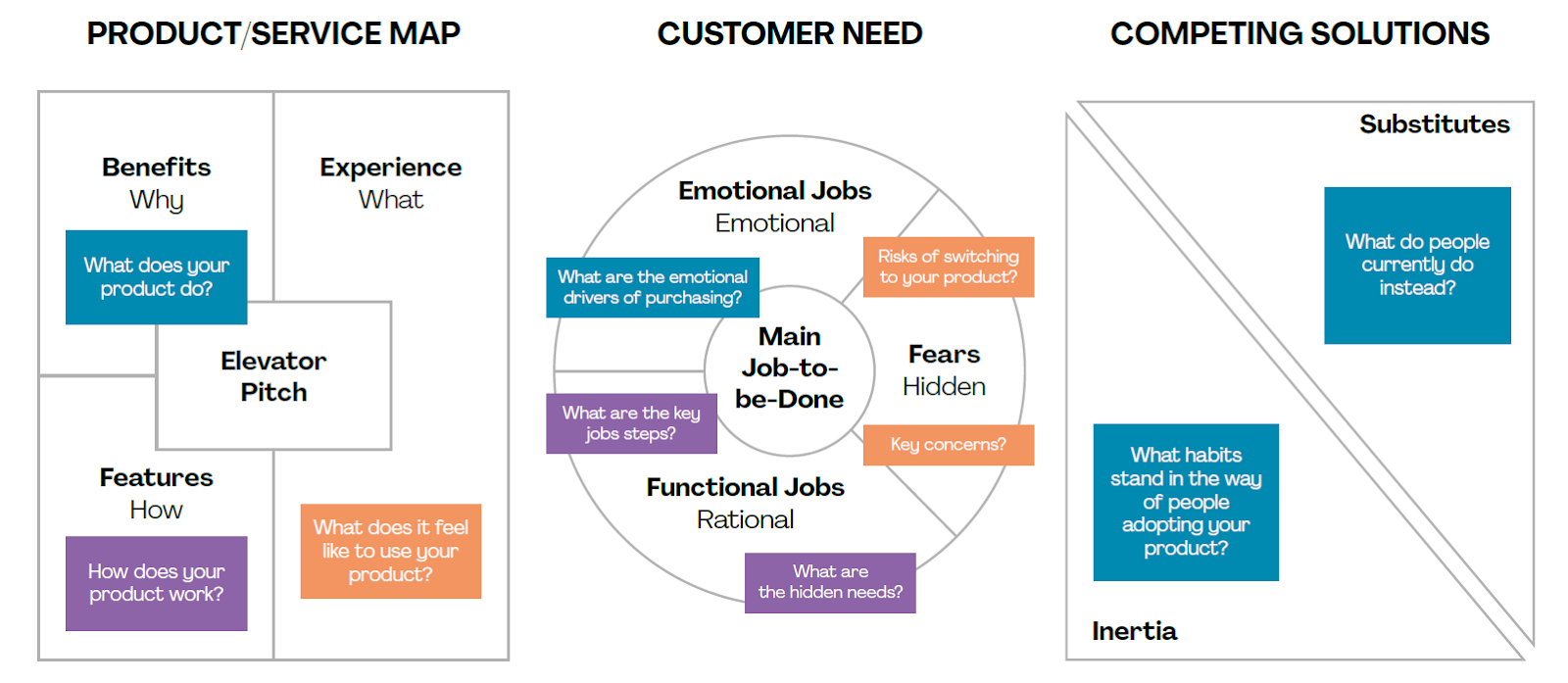To tell customer centricity is a must would be an understatement. And a cliché. The problem is that companies begin and end with that in the sales department. Meanwhile the modern market requires a new approach. The one with multiple brand touchpoints and a holistic strategy to back it up. Today customer value should be generated by the entire company – from HR department, through delivery, ending (not beginning) with marketing and sales.
Why? Because in the modern approach, the entire company should sell the product or service. That way every business process is centered around the common goal and everything is consistent. Why that matters? If you scale a company and establish customer value, you usually do it for marketing and sales department. In the meantime, the entire company could and should generate it.
What is customer value?
Customer value comes from products and services that customers find useful. This is driven by the product itself, its innovation, addressing pain points and allowing something that was previously hard or impossible. OK, but how can you create it throughout your own company?
By understanding that customer value is not limited to any specific company department. It can and even has to be generated everyday by every single person in the firm. Usually, companies are focused on how and what a person brings to the table by measuring return on investment (ROI). Now, imagine a person is a self-sufficient operator that understands how to act and what to do in every single situation. Without supervision. Ridiculous? Not at all.
The key to a modern operational success is equipping every person in the company with the understanding of this company’s mission and vision. And what it actually means for the customer. That way, when an employee questions the next move, he or she can easily refer to core values. Most importantly – how to impact the customer and help him resolve the issue or bring the value in some other form (e.g., by delivering the better product).
Basic theory
The easiest way? Use the value proposition canvas. It’s broken down to three major sections: Product/service map, Customer need and Competing solutions. Let’s go through it real quick.
 Figure 1. Value proposition canvas
Figure 1. Value proposition canvas
Source: Digital LeadershipThe most important part is at the beginning. Why should anyone use your product? What’s the basic reason? Next – what experience does the product bring to the table? Through what features, how does it work?
What emotional drivers behind the buying process are there? Does the purchase come from a need of having something beautiful? Fear of missing out? What rational motivation can be associated with the buying process? Does the customer need something useful, to fix another thing? Does it come with holding capacity that is urgently needed? What hidden fears can block the purchase? Does the customer worry about the quality or warranty afterwards? Is the price to steep?
Finally – what customer habits prevent people from buying your product and what market substitutions for your offer are there?
If you take any question from the list above, it’s important enough to make or break your case and convince the customer to buy. If you take them all into consideration and build your company around serving business value, you won’t have to convince anybody about anything. The customer will see arguments right away. Let me explain.
Every department, every process
Scale your company by embedding the mindset into every cell of your organization. For example: HR should always ask questions about customer centricity and how given person’s job description can, in candidate’s own words, contribute to value proposition. HR should always nurture company culture that’s based on that and stimulate the growth of pro-value internal initiatives.
Processes that lead to product creation or improvement should always start from a question of why anyone should buy the product. How can it contribute to the life of the customer? What features should it have? Most importantly – why anyone would care?
Sales and marketing should focus on highlighting this “why”. Everything else is a side note.
This requires company culture that is already built or can be adapted to handle the prerogative. The easiest way to do it is by adopting the “5 x why” rule. If someone in the team claims that something is value-based, ask why. Until you dig out the answer. It’s literally the easiest and cheapest method to turn things around in the company, and quick.
In the perfect world, everything should run on this fuel. Your firm, infrastructure, network, suppliers and partners. Logistics, operations, product management, technology, customer service. Although you can implement it internally, it’s not always easy to convince your partners and subcontractors to do the same. And it’s important, because one piece created for your product or freelance job done by someone else could negatively impact the entire product making process.
How can you create the value?
There are two ways to do it: discover or create it yourself. Meaning that you can pick a brain of your focus group or study market reports. You can also take them into consideration and create something people didn’t know they want. Remember: no one was prepared for an iPod until it landed. If you can’t or don’t want to literally listen to people, give them something new. Tell them, why they need something. Spin it in your favor.
There are four basic types of value: functional, monetary, social and psychological.
There are also three basic customer value strategies: product value, unexpected quality of a service, and sustainable difference from competition.
If you can encompass all of them, you’re the winner. Drive and maintain the culture of innovation. Create a culture book that will remind people why they work for you. It’s not about a pizza and a beer every now and then. It’s about a feeling of creating something meaningful. Nobody expects you to create a functional Martian base on the first day of work. Instead, work with functional increments and increase the competence in a “snowball model”.
One of the most important things in the entire customer value creation process is turning a price into investment or marginal factor, instead of sad necessity. Convince your customers, that price is not that important. That they pay for what’s bigger than the price; for example, time saving features in your newest product. You use, you do something quicker, you save time. Simple. OK, but how can you achieve that?
It’s time to come full circle. To create a customer value, every department and every employee should contribute to the final result. There are no longer “key stakeholders” in organizations. All employees should bare that role. HR spots top talents and pay attention to not obvious ones that can slip through cracks. Therefore, HR Specialists are “Business Partners”, and for a reason. Product development teams focus on functional value. Marketing & sales establish basic for a customer long-term relationship. They do not sell. They talk to people. You can sell everything if you’re determined enough. But you can’t have a healthy, long-running revenue stream if customers don’t trust you. And that’s the most important part of it all. On a saturated market, anyone can sell people anything. Can your brand go through a first crisis? We are fighting a major inflation, after all. Can it survive the second? How many can it withstand? Or isn’t creating a strong brand a point of it all? That way, through customer value, you won’t have to be afraid and prepare emergency plans for every market or internal crisis.

[ENG] The author is a branding, marketing, company scaling, process optimizing, and content expert. He creates and develops brands, builds an image, and marketing communication. He believes in a holistic approach to sales, marketing, public relations, human resources, and employer branding. By relying on Customer-centric Selling, Design Thinking, and Created Shared Value (CSV), he helps companies increase revenue and build an attractive image for both customers, business partners, and employees. He published a few books, first at 22 years old. Learn more by visiting www.scislak.com.www.scislak.com
[PL] Autor zajmuje się brandingiem, marketingiem, skalowaniem firm, optymalizacją procesów i contentem. Tworzy i rozwija marki, buduje wizerunek i komunikację. Podchodzi holistycznie do sprzedaży, marketingu, public relations, human resources i employer branding. W pracy opiera się na Customer-centric Selling i Design Thinking. Ekspert ekonomii wartości, mającej realne przełożenie na zyski firmy, jej wizerunek oraz relacje z partnerami i pracownikami. Autor kilku książek, pierwszą napisał na zamówienie jeszcze na studiach. Na co dzień pisze na blogu www.scislak.com